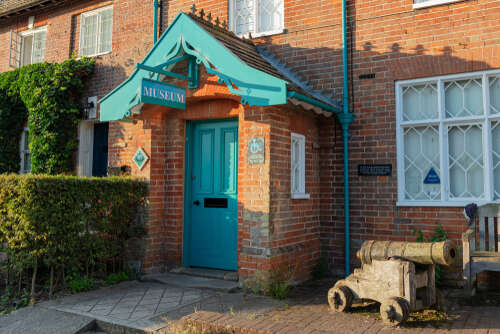
It’s 2023 and, if there was ever any doubt that the climate emergency wasn’t the existential issue of our times, it’s fading fast. The global average temperature for July 2023 was confirmed to be the highest on record for any month, according to the World Meteorological Organisation, with wildfires and heatwaves sweeping across the globe.

It’s as if we think countries like the UK are somehow predisposed to not being entirely blown to bits by extreme weather; instead, we get the benefits. To us a warmer climate brings up-and-coming Surrey wine and a good excuse for a balmy stay-at-home holiday.
But the UK already has proof of the damage the climate can do – a drowned city lost for good, our own Atlantis, the victim of shifting seas and a dangerous fable for any low-lying town that remains.
They called it Dunwich, Anglo-Saxon for the “town on the hill”. Located on the East Anglian coast, it was recorded in the Domesday Book as one of the largest towns in England, with more than 3,000 inhabitants compared with just 400 for Brighton. At its 13th-century peak, its size would have rivalled that of the medieval City of London. It had almost a dozen churches, distinct quarters, bustling market squares, a town hall and even a vast monastery. But the ruined wall of the latter is the only trace that still stands of the medieval town: Dunwich has been submerged and, for the most part, forgotten.
The local museum attempts to depict what the town once was, though half of the street pattern is the result of “informed speculation” because the original has been completely washed away by five centuries of erosion. Remarkably, a solitary gravestone remains from the graveyard of the last church to fall away into the sea. This, along with most of the remaining ruins, is predicted to collapse before 2100, removing the final titbits of evidence for the existence of a town that once rivalled London.
So what happened to Dunwich?
The town was built on a natural bay, and grew as a hub of trade. Originally, the Dunwich River provided a protected harbour for ships coming in around the East Anglian peninsula, just as Lowestoft or Felixstowe do today.
But after a storm in 1286 CE, the harbour began silting up and the sea encroaching. The natural spit that once sheltered the town wore away until Dunwich lay at the water’s edge in all directions: the coast was eroding by more than a metre a year. A second storm in 1328 CE saw 375 dwellings in three separate parishes lost in a single night. The population sank from 4,500 to just over 1,500 in less than 100 years – and that was before the Black Death turned things from bad to worse.
By 1587, records show that most of the street pattern remained, creating a ghost town of under 200 people. That’s roughly how many remain today, but in scattered houses further inland: almost all of the original street pattern lies beyond the sandbank. One of the greatest towns of medieval Britain effectively fell into the sea.
The chalk of the Suffolk coast is still prone to erosion, and even now there’s little incentive to protect it. While Dunwich now lies between the latter-day seaside resorts of Southwold and Aldeburgh, it never became a pied-á-terre for London’s second homeowners. Instead, it was slowly abandoned and then demolished altogether, not thanks to fate or even that lovely GCSE Geography topic of “longshore drift”, but simply shifting sands.
Facsimiles of Dunwich exist all along the East Anglian coast: towns that were once of great importance, miniaturised by social and geographical trends. There are half a dozen churches on this stretch of coast encased in the ruins of far larger ones: the skeleton of a church far larger was abandoned and replaced with a smaller one that was easier to maintain, as populations dwindled.
The onslaught of the North Sea provoked its own medieval migratory flow; it was simply no longer sustainable to keep protecting towns like Dunwich with the rudimentary sea defences of the time, so its people steadily took their leave. Today, with our modern sea defences, it’s not quite the same story. But just imagine if the storm that swept away Dunwich’s dreams came again; it’s hardly out of the question.
Salty seas, patchy records and sheer obscurity mean we didn’t build a story around the destruction of Dunwich the way we have with Pompeii or Chernobyl. But we can use the story of Dunwich as a stand-in until the day comes when Ely, Boston or Margate face the wrath of the cold, frigid sea.
Thousands lost their homes when the sea came to Dunwich because they weren’t ready to push it back. Either we start sympathising and supporting those across the world who face this fate today, or we renounce the sympathy of others when we eventually face the fate that our ancestors knew all too well. We need to learn from the cities we’ve lost; sometimes you have to sink a city to save one.
[Read more: The lost colony of Roanoke]






